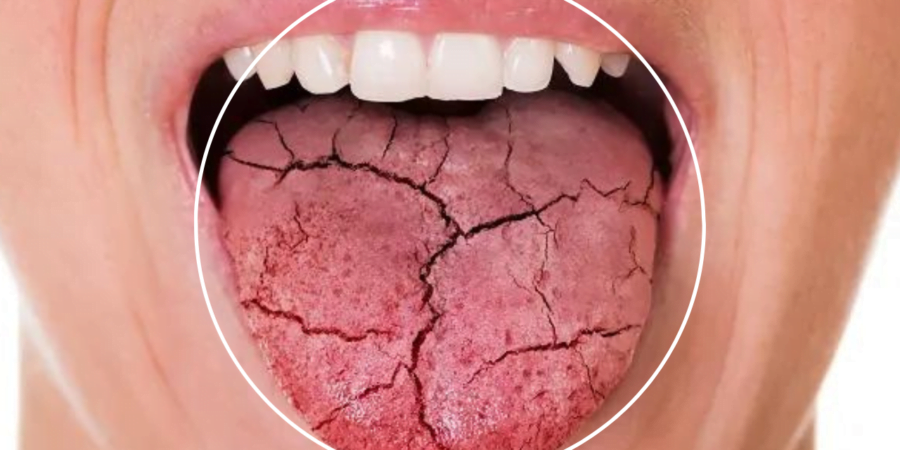- Presentation
Gougerot Sjögren syndrome is an autoimmune disease characterized by lymphoid infiltration of the salivary and lacrimal glands responsible for dry mouth and eyes, and by the production of various autoantibodies.
The disease is common: 0.1% to 0.4% of the adult population, i.e. 50 to 200,000 patients in France. It is, in order of frequency, the second most common systemic autoimmune disease behind rheumatoid arthritis. It affects women more often (90%). The peak frequency of the disease is around the age of 50.
Gougerot Sjögren syndrome can be primary or associated with another systemic disease (rheumatoid arthritis, systemic lupus erythematosus, inflammatory myopathies or scleroderma).
Sjogren’s syndrome occurs when a person’s immune system attacks and destroys the glands that produce secretions in the body, including the salivary and tear glands. The lungs, kidneys, nerves and other organs are less often affected by Gougerot Sjögren syndrome. The symptoms are caused by an insufficient production of secretions from certain glands of the body.
Diagnosis can be difficult at first because the signs appear slowly and are very different from one patient to another, and not very specific. Its onset is often very insidious, so much so that the diagnosis is often made several years after the onset of the first symptoms. Note that a patient does not generally experience all the symptoms of the disease. He may very well only experience one or two symptoms. The progression of the disease is slow and different depending on each person.
Gougerot Sjögren syndrome is often manifested by the triad of pain (joint and/or muscular), dryness (ocular, oral, skin, genital or bronchial) and fatigue which are often at the forefront clinically. Sometimes, the sign or symptom revealing Gougerot Sjögren’s syndrome is quite different, but it is much rarer: swelling of the glands parotids, Raynaud’s phenomenon or purpura.
To establish the diagnosis, doctors objectify the dry syndrome using certain ocular tests (Shirmer test) and/or oral tests (salivary flow). They can also carry out blood tests (presence of anti-SSa or anti-SSb antibodies) and, if necessary, a biopsy of the salivary glands.
Gougerot-Sjögren syndrome is a slowly progressive chronic disease that can remain stable for many years. However, regular monitoring of patients is warranted to prevent complications.
The treatment of Gougerot Sjögren syndrome involves several therapeutic means:
- Rules of life : patients must learn to avoid factors that can promote dry, oral or ocular syndrome such as certain medications, long work on computers, tobacco. They must have perfect oral hygiene because saliva has anti-bacterial activity.
- Symptomatic treatment of dry eyes or mouth with eye drops, saliva substitutes, pilocarpine, etc.
- Symptomatic treatment of pain . There are several types of medications whose effectiveness varies depending on the patient: analgesics, nonsteroidal anti-inflammatories, low-dose corticosteroid therapy.
- Treatment of systemic damage . In certain cases of systemic complications, immunosuppressive treatment will be prescribed. These drugs target immunity; these are molecules whose goal is to reduce, or modulate, the hyperactivity of the immune system, as well as inflammation.
Disease-modifying treatments (off-label): hydroxychloroquine, methotrexate combined with a small dose of corticosteroids. More rarely immunosuppressants except in forms with severe disease.
Biomedicines do not have marketing authorization in Sjögren. In so-called systemic forms with organ damage, or vasculitis linked to cryoglobulin, rituximab can be considered.
Frequently asked questions (precautions, vaccinations, genetic risk, etc.)
- Vaccinations
During Gougerot Sjögren syndrome, vaccinations are often possible and even recommended, but with some precautions. Important vaccinations, such as those against tetanus and poliomyelitis, are strongly recommended. It is therefore necessary to check that the vaccination record is updated. These vaccinations are possible at any time even if they should be avoided during an outbreak of the disease, but this must be discussed with the doctor specializing in Gougerot Sjögren syndrome. If vaccinations are carried out under corticosteroids or immunosuppressants, the effectiveness of the vaccination may be reduced, but this does not call into question its usefulness.
Please note, in the case of high-dose corticosteroid treatments (more than 20 mg per day of prednisone equivalent) and/or immunosuppressants, live attenuated vaccines (chickenpox, rubella, measles, mumps, oral polio, yellow fever and BCG) are contraindicated. On the other hand, non-live vaccines (tetanus, injectable polio) are authorized.
In addition, certain vaccines (anti-flu and anti-pneumococcal) are strongly recommended, in addition to those in the vaccination schedule, because they protect against severe infection favored by immunosuppression.
- Genetic
Gougerot Sjögren syndrome is not an inherited genetic disorder. However, there is frequently a predisposition to autoimmune diseases in patients with Gougerot Sjögren syndrome, which explains why exceptionally within a family we can sometimes observe several patients with different or identical autoimmune diseases.






Leave feedback about this